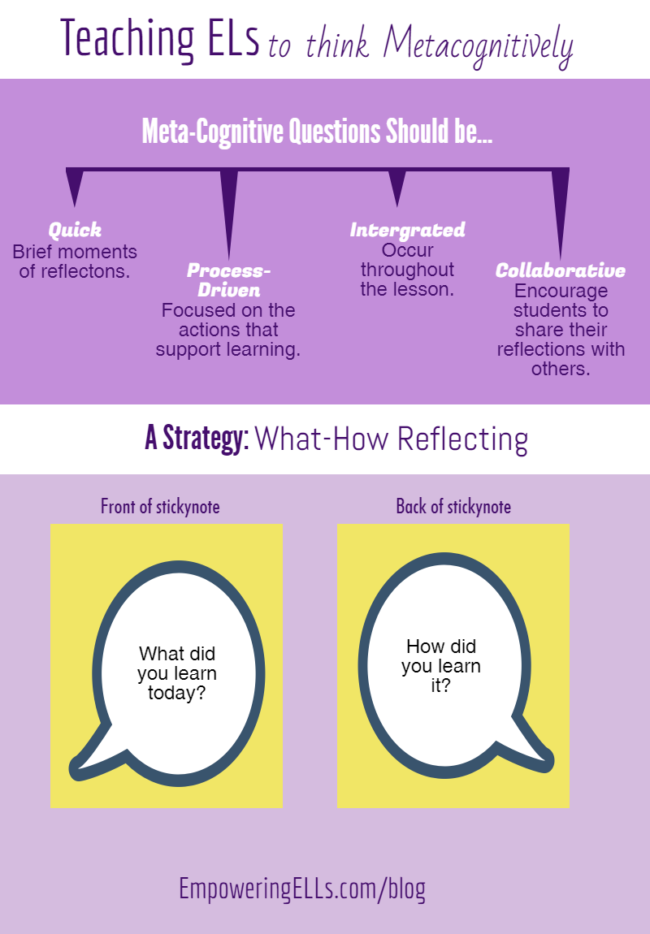Larry Ferlazzo invited me to guest post on his Education Week Teacher blog about teaching metacognitive thinking. This post appeared originally in Education Week on October 12, 2016.
Metacognitive strategies develop the ability to independently solve problems, construct meaning, and express ideas because they prompt students to think about how they learn. Metacognitive strategies are particularly effective in empowering English learners (ELs) because they illuminate how literacy skills can be transferred between classes. By using the Q-PIC framework to create metacognitive strategies, for example, teachers can create a simple strategy like What-How Sticky Noting that can be used for any subject.
Considerations When Using Metacognitive Strategies
Quick: Compose a short prompt – just a sentence or two – that elicits a quick student response. An metacognitive strategy should be a gentle pause in learning.
Process-driven: The prompt should ask students to think about the steps they took to solve the problem or describe the strategies they used to learn the content. Reflecting on the process develops transferable skills that empower ELs to be independent learners.
Integrated: Consciously look for opportunities to integrate metacognitive strategies within the lesson cycle, not just at the end of class. For example, ask ELs to pause and think about the process after they read a complex section of text, write an introductory paragraph, or experience an important breakthrough. Using metacognitive strategies when students show progress praises the process rather than the students.
Collaborative: Having ELs share their processes with the class provides other students with more strategies with which to experiment. Additionally, it cultivates a classroom culture that honors how students learn as well as what they learned.
What-How Strategy
In What-How Sticky Noting, ELs recall what they learned during a particular activity on one side of a sticky note. On the other side, they reflect on how they learned the content. This Q-PIC strategy is quick, process-driven, can be used at any time, and can be easily implemented across the disciplines.
Closing Thought
Reflecting on learning cements understandings . Teaching any student to think metacognitively is about growing the capacity to learn. But for ELs, it equalizes educational opportunities because reflective thinking enables ELs to participate in all content areas while developing their abilities to be on par with their native English-speaking peers. Metacognitive strategies shift ELs’ self-perception from one of “limited” abilities to one of endless potential.
[UPDATE, Dec. 2016]: A close Twitter friend shared this article entitled “Do you Pose Questions that Invite Metacognition” which contains MANY metacognitive questions you can ask students. Very helpful because it provides an extensive list of questions. Gracias, @emilyfranESL.


